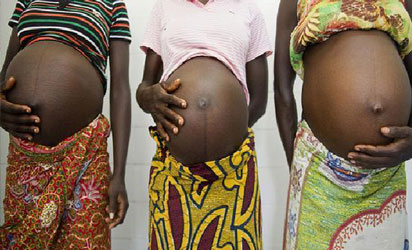By Jeph Ajobaju, Chief Copy Editor
Lagos has the lowest fertility rate of 3.4 children per woman but the higher Gross Domestic Product (GDP) of $29 billion among the 36 states in Nigeria.
In contrast, Katsina has the highest birth rate of 7.3 births per woman and ranks 18th in GDP with $5.3 billion.
That underscores the point being made by Oladapo Shittu, a Professor and Provost of the College of Medicine, Federal University of Health Sciences Otukpo, who says population demography directly affects the prosperity of states and countries.
Shittu, a Consultant Obstetrician and Gynecologist, disclosed this at an online media training for health reporters and features writers.
He presented a paper on “Demographic Dividend: Population, Health and Economic Development The Relationship Among Contraceptive Elements and Certain Demographic’’.
The training was organised by Rotary Action Group for Reproductive, Maternal and Child Health, in conjunction with the German Ministry of Economic Cooperation and Development, according to the News Agency of Nigeria (NAN).
High cost of raising children
The PUNCH, quoting the NAN, reported Shittu as saying that families that do not control their number of children end up spending their earnings on food, diapers, and payment of school fees with little left for savings and investment.
He explained that high fertility at the national level results in demography where the number of dependents aged 65 and above far outweighs those in the economically active group of between 15-64 years.
He presented statistics and infographics to prove that states with high fertility rates have more poor and illiterate people, and states with high family planning penetration have lower fertility rates and higher living standards.
Shittu said family planning has nothing to do with religion as a North African country, a largely Muslim area, have embraced family planning and achieved a higher demography dividend than any other part of Africa.
He counselled families to embrace family planning to reap the dividends, which included prevention of maternal, child and infant deaths, abortion, unwanted pregnancies as well as better health and economy.
According to him, unrestrained childbirth leads to a higher poverty rate and underdevelopment, as the economy and the wellbeing of the family both depend on the size of the family.
“Unrestrained childbearing leads to poverty, reduced childbearing from use of modern contraceptive leads to poverty reduction.
“The challenges of building provider capacity to ensure women’s access to quality family planning services under COVID-19 pandemic,’’ he stressed.
Hadiza Galadanci from the College of Health Sciences, Bayero University Kano (BUK), said child spacing prevents high-risk pregnancies that lead to the death of mothers or babies.
Galdanchi, a Professor of Obstetrics and Gynecology, and Director of Excellence for Population Health and Policy, added that high-risk pregnancies happen when a woman is too young to bear a child.
She warned that a woman’s uterus could rupture if she has too many children, because “the uterus is like a balloon, when it is overblown, it bursts.”
Poverty and illiteracy are two major challenges or barriers to family planning, she explained.
“One of the huge challenges to child spacing is human resources. We have huge challenges not just in Nigeria, but Africa.”
Galdanchi said human resource challenge can only be solved through education.
Akwa Ibom birth rate 3.6; Bauchi 7.2
The report of a 2018 Nigerian Demographic and Health Survey published in November 2019 showed that the birth rate in urban areas is much lower than that of rural areas.
According to the survey, Nigeria’s birth rate is 5.3 children per woman.
The state with the second-lowest birth rate is Akwa Ibom (3.6), followed by Cross River (3.7 births)
Other states with high birth rates include Bauchi (7.2) and Jigawa (7.1), Adamawa (6.1), Yobe (5.9), and Borno (5.2).
“Currently, women in Nigeria have an average of 5.3 children. Since 1990, fertility has decreased from 6.0 children per woman to the current level,” the report said.
“Fertility varies by residence and state. Women in rural areas have an average of 5.9 children compared to 4.5 children among urban women. By state, fertility ranges from 3.4 children per woman in Lagos to 7.3 children per woman in Katsina.
“Fertility also varies with education and household wealth. Women with no education have twice as many children as women with more than secondary education. Fertility decreases as the wealth of the respondent’s household increases.”
The survey also showed that
· Women living in the poorest households have an average 6.7 children, compared to 3.8 children among women living in the wealthiest households.
· Lagos has the lowest rate of teenage pregnancy at 1 per cent, Bauchi the highest at 41 per cent.
· 44 per cent of teenage girls with no education bear children early compared to 1 per cent of teenage girls with more than secondary education.
The report was conducted by the National Population Commission (NPC) in conjunction with the Federal Ministry of Health.
Other partners included the Bill and Melinda Gates Foundation, World Health Organisation, United States Agency for International Development, Global Fund and UNFPA.













